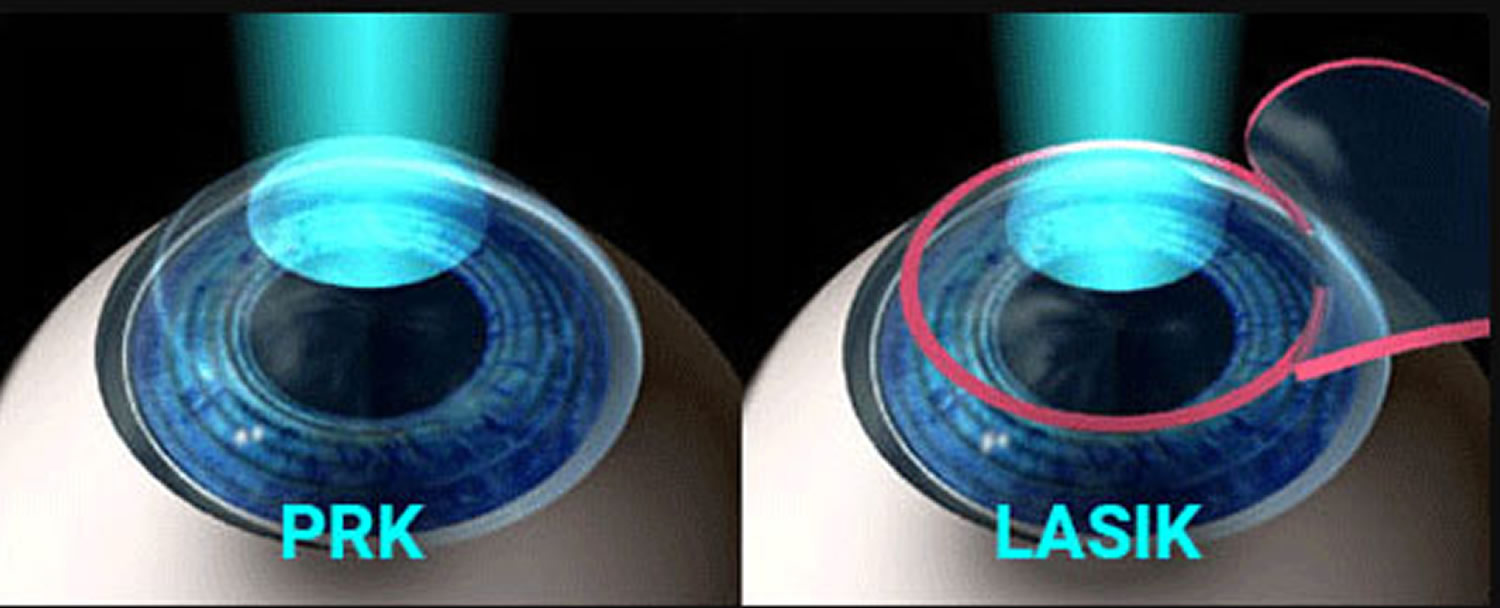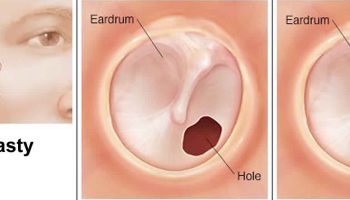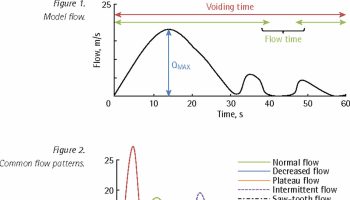What is PRK
PRK stands for photorefractive keratectomy, which is a laser vision correction surgery. PRK eye surgery uses a laser to treat vision problems caused by refractive errors. You have a refractive error when your eye does not refract (bend) light properly. PRK is used to treat myopia (nearsightedness), hyperopia (farsightedness) and astigmatism.
The goal of PRK (photorefractive keratectomy) is to correct your refractive error to improve your vision. PRK may reduce your need for eyeglasses or contact lenses. In some cases, PRK may even allow you to do without them completely.
In PRK eye surgery, the top layer of the cornea is removed, then an excimer laser removes tissue from the middle surface of the cornea to reshape the cornea to correct mild to moderate nearsightedness (myopia), to give clearer vision.
Photorefractive keratectomy (PRK) is done with the same kind of excimer laser used for LASIK surgery.
The excimer laser beam reshapes the cornea by removing tiny amounts of tissue from the outer surface. The procedure uses a computer to map the eye’s surface and calculate how much tissue to remove. This surgery generally takes a few minutes. Because the cornea surface is cut, it takes several weeks to heal.
Figure 1. Human eye
Figure 2. Myopia (nearsightedness) – images are focused in front of the retina
Figure 3. Hyperopia (farsighted vision) – images are focused behind the retina
Figure 4. In astigmatism, images focus in front of and beyond the retina, causing both close and distant objects to appear blurry.
PRK complications and risks
The most common side effects of PRK eye surgery include:
- Eye pain that may last for several weeks
- Mild corneal haze right after surgery
- Glare or halos around lights for months after surgery
Like any surgery, PRK carries risks of problems or complications you should consider. These include:
- glare and halos around lights, particularly at night
- scarring of the cornea
- cloudiness of the cornea (called corneal haze)
- corneal infection
Also, with PRK, your vision may end up being undercorrected or overcorrected. These problems often can be improved with glasses, contact lenses, or additional laser surgery.
Most complications can be treated without any loss of vision. However, very rare problems may include:
- having worse vision than before PRK, even with glasses or contacts (called loss of best-corrected vision)
- blindness
If you are happy wearing contacts or glasses, you may not want to have refractive surgery. Together, you and your ophthalmologist can weigh the risks and rewards of PRK.
Should I get PRK?
If you have dry eyes or thin corneas and want to have refractive surgery, PRK may be a good choice for you. This is because some other types of refractive surgery, such as LASIK, are not recommended if you have these conditions.
Also, if you have a very active lifestyle or job, PRK may be a better option for you than LASIK or similar procedures. This is because PRK does not involve cutting a flap in your cornea like LASIK and similar surgeries do. If you are highly active, you could accidentally dislodge a corneal flap, causing problems.
Some people who have certain lenses put in their eyes during cataract surgery may have PRK to fine-tune their vision.
To have PRK, you need to meet certain requirements:
- You should be 18 years or older (ideally, over 21 years old, when vision is more likely to have stopped changing).
- Your eye prescription should not have changed in the last year.
- Your refractive error must be one that can be treated with PRK.
- Your corneas need to be healthy, and your overall eye health must be generally good.
- You need to have realistic expectations about what PRK can and cannot do for you.
Some people are NOT candidates for PRK. They include people with:
- an unstable (changing) refractive error
- skin or other disease that can affect healing
- a history of a lot of scarring
- cornea abrasions or disease
- advanced glaucoma
- a cataract affecting vision
- uncontrolled diabetes
- pregnant or nursing women
- history of certain eye infections
Your ophthalmologist can talk with you about other conditions that may keep you from having PRK.
To determine whether you are a candidate for PRK, your ophthalmologist will examine your eyes. Here’s what will be done:
- The overall health of your eyes will be checked.
- Measurements of your cornea will be taken.
- Your pupil size will be checked.
- Your refractive error will be measured.
Before PRK Surgery
You and your ophthalmologist will discuss your vision needs based on your lifestyle. For example, if you play sports, you may be seeking clear distance vision from surgery.
Also, you and your ophthalmologist should discuss your expectations for PRK. People who have PRK to achieve perfect vision without glasses or contacts run the risk of being disappointed. PRK allows people to do most of their everyday tasks without corrective lenses. However, you might need to wear glasses for certain activities, such as reading or driving at night.
Your ophthalmologist will thoroughly examine your eyes and make sure you are a candidate for PRK.
Here is what he or she will do:
- Test your vision. This is to make sure that your vision has not changed. It also shows how high your refractive error is and whether PRK can be used to correct your vision.
- Check for other eye problems. Your ophthalmologist will make sure that you do not have eye problems. This is because other problems could affect your surgery, or PRK could make those other problems worse.
- Measure and map the surface of your cornea. Your ophthalmologist will check the thickness of your cornea and make precise measurements of the cornea’s surface. Your eye surgeon uses these measurements to program the computer-based laser used during surgery.
- Measure your pupil size. He or she will also measure the size of your pupil.
PRK procedure
PRK is usually done in an outpatient surgery center. The procedure usually takes about 15 minutes. Here is what to expect:
- Your eye will be numbed with eye drops.
- Your eye surgeon will place an eyelid holder on your eye to keep you from blinking.
- Then your ophthalmologist will remove the outer layer of cells on your cornea, called the epithelium. To do this, he or she may use a special brush, blade, laser or alcohol solution.
- You will be asked to stare at a target light so that your eyes will not move. The ophthalmologist then reshapes your cornea using a laser. The laser is a special instrument that has been programmed with measurements for your eye. While your ophthalmologist is using the laser, you will hear a clicking sound.
PRK recovery
Right after surgery, your ophthalmologist will place a “bandage” contact lens over your eye to help it heal.
- You will need to have someone drive you home after surgery. You should plan to go home and take a nap or just relax after the surgery.
- Your surgeon may suggest that you take a few days off from work. Also, you should avoid strenuous activity for up to a week after surgery, as this could slow the healing process.
- For two to three days after PRK, you may have some eye pain. Over-the-counter medicine usually controls the pain. Occasionally, some people may need eye drop pain relievers or other prescription medicine to relieve pain. Be sure to call your ophthalmologist if your pain is not helped by over-the-counter medicines.
- You will need to use eye drop medicine for up to a month or as prescribed by your ophthalmologist. Be sure to follow your doctor’s instructions for using this medicine to help healing.
- After PRK, you will need to wear sunglasses outside for as long as your doctor tells you. This is because sun exposure can lead to corneal scarring after surgery, causing vision problems.
PRK recovery timeline
At first, your vision will be blurry after PRK. Over 3–5 days, as you heal, your vision will gradually improve. Keep in mind it may take a month or longer to achieve your best vision.
About 9 out of 10 people (90 percent) who have PRK end up with 20/40 vision or better without glasses or contact lenses.
It is important to know that PRK cannot correct presbyopia. This is the normal, age-related loss of close-up vision. With or without refractive surgery, almost everyone who has excellent distance vision will need reading glasses after around age 40.
To help with presbyopia, some people have PRK to get monovision. This means one eye is left slightly nearsighted and the other eye is adjusted for distance vision. The brain learns to adapt so that the nearsighted eye is used for close work, while the other eye sees distant objects. Monovision is not for everyone. To see if you are able to adapt to this correction, you will probably want to try monovision with contact lenses first.
PRK vs LASIK
LASIK stands for “laser in situ keratomileusis.” LASIK is a type of laser eye surgery to treat nearsightedness (myopia), farsightedness (hyperopia), and astigmatism. LASIK cannot reverse presbyopia, the age-related loss of close-up focusing power, which mainly affects near vision. The LASIK procedure reshapes the cornea with an excimer laser — to improve the way the eye focuses light rays onto the retina at the back of the eye. LASIK has replaced many of the other refractive eye surgery methods.
LASIK is approved by the FDA to treat certain degrees of nearsightedness, farsightedness and certain types and degrees of astigmatism, alone or in combination with near- or farsightedness. In general, severe refractive error reduces the chance of success and increases the chance that retreatment may be needed.
LASIK surgery is done using a computer-controlled excimer cold laser and a tool called a microkeratome, which is like a carpenter’s plane, cuts a thin flap of tissue from the front of the cornea (clear part on the front of the eye). This same procedure can be performed with a femtosecond laser. With these tools, the surgeon cuts a flap in the center of the cornea to remove a thin layer of tissue. The flap is then folded out of the way. Next, an excimer laser removes a very specific amount of corneal tissue from the front surface of the cornea to alter the shape and power. After the laser treatment, the flap is folded back over the cornea. This causes the cornea to flatten. The flap is replaced without stitches and reattaches to the cornea within minutes.
For people who are nearsighted (myopic), LASIK is used to flatten a cornea that is too steep. Farsighted people will have LASIK to achieve a steeper cornea. LASIK can also correct astigmatism by shaping an irregular cornea into a more normal shape.
It is important that anyone considering LASIK have realistic expectations. LASIK (laser in situ keratomileusis) allows people to perform most of their everyday tasks without corrective lenses. However, people looking for perfect vision without glasses or contacts run the risk of being disappointed. More than 90 percent of people who have LASIK achieve somewhere between 20/20 and 20/40 vision without glasses or contact lenses. If sharp, detailed 20/20 vision is essential for your job or leisure activities, consider whether 20/40 vision would be good enough for you.
You should be comfortable with the possibility that you may need a second surgery (called a retreatment or enhancement) or that you might need to wear glasses for certain activities, such as reading or driving at night. Also, you should be aware that LASIK cannot correct presbyopia, the age-related loss of close-up focusing power.
Wavefront-guided LASIK is an advanced method for measuring optical distortions in the eye. The technology can be used to evaluate the eye before surgery. It measures how light is distorted as it passes into the eye and is reflected back. This creates an optical map of the eye and shows problem areas. The wavefront technology lets a LASIK surgeon adjust the laser beam settings for a more precise procedure. This can give sharper vision and reduce nighttime vision problems.
In most cases, recovery from LASIK surgery is fast and involves minimal discomfort. Mild pain medicine and eye drops can help common after-effects of surgery such as:
- Dry eyes during healing
- Eye discomfort in the first 24 hours after surgery
How the LASIK procedure works
LASIK is performed while the patient reclines under a surgical device called an excimer laser in an outpatient surgical suite.
First, the eye is numbed with a few drops of topical anesthetic. An eyelid holder is placed between the eyelids to keep them open and prevent the patient from blinking. A suction ring placed on the eye lifts and flattens the cornea and helps keep the eye from moving. The patient may feel pressure from the eyelid holder and suction ring, similar to a finger pressed firmly on the eyelid.
From the time the suction ring is put on the eye until it is removed, vision appears dim or goes black. Once the cornea is flattened, a hinged flap of corneal tissue is created using an automated microsurgical device, either a laser or blade called a microkeratome. This corneal flap is lifted and folded back. Then the excimer laser preprogrammed with the patient’s unique eye measurements is centered above the eye.
The surgeon checks that the laser is positioned correctly. The patient looks at a special pinpoint light, called a fixation or target light, while the excimer laser sculpts the corneal tissue. Then the surgeon places the flap back into position and smoothes the edges. The corneal flap sticks to the underlying corneal tissue within two to five minutes, and stitches are not needed.
The patient should plan to have someone drive him or her home after the procedure and then take a nap or just relax. To help protect the cornea as it heals, the surgeon may place a transparent shield over the eye(s) to protect against accidental bumps and to remind the patient not to rub the eye(s). The patient may need to wear the shield only when sleeping. The surgeon will provide eyedrops to help the eye heal and relieve dryness.
After LASIK surgery, you should avoid rubbing the eye, which may cause the flap to shift out of place. To help protect the cornea as it heals, the surgeon may place a transparent protective shield over your eye. The shield may only be needed at night to prevent you from rubbing the eye during sleep.
Usually your vision will be clear enough to drive to the follow-up visit the next day. The doctor may advise waiting several days before you resume a normal work schedule. The doctor should advise you on how long you should wait before resuming sports, exercise, or strenuous activity.
After LASIK surgery, you will receive eyedrops to help prevent infection and inflammation during the healing process and to alleviate dryness. You must be sure to follow any instructions from your doctor and return for follow-up appointments as directed. Bear in mind that it may take three to six months for vision to stabilize completely.
All LASIK patients should ask their doctors for a record of their pre-LASIK correction prescription. This information is important for you to give to the doctor who may perform a future cataract surgery or other eye disease diagnosis and treatment.
It may take three to six months after LASIK surgery for the improvements in a person’s vision to fully stabilize and any side effects to go away.
LASIK eye surgery possible risks and complications
LASIK, like any surgery, has potential risks and complications that should be carefully considered. Since it was approved by the FDA in 1998, LASIK is has become a popular treatment in the United States and the overall complication rate is low. LASIK has been performed on millions of patients in the United States in the past 10 years, and the overall rate of severe complications is low. Most LASIK complications can be treated without any loss of vision, but vision loss may rarely occur. Infection and inflammation are possibilities, as with any surgical procedure, and usually can be cleared up with medications.
Problems with the corneal flap after surgery sometimes make further treatment necessary. There is a chance, though small, that vision will not be as good after the surgery as before, even with glasses or contacts.
Some people experience side effects after LASIK that usually disappear over time. These side effects may include hazy or blurry vision; difficulty with night vision and/or driving at night; scratchiness, dryness and other symptoms of the condition called “dry eye”; glare, halos or starbursts around lights; light sensitivity; discomfort or pain; or small pink or red patches on the white of the eye. In a small minority of patients, some of these effects may be permanent.
Sometimes a second surgery, called a retreatment or enhancement, may be needed to achieve the desired vision correction. This is more likely for people who were more nearsighted, farsighted, or had higher astigmatism before LASIK — those whose vision originally needed more intensive correction. Approximately 10.5 percent of LASIK patients in the United States require a retreatment.
LASIK eye surgery possible complications include:
- Overcorrected or undercorrected vision, could mean that the person might still need to wear corrective lenses for some or all activities, or need a retreatment with LASIK or another, similar refractive surgery to achieve the patient’s desired results.
- Irregular astigmatism
- Corneal haze or glare
- Discomfort or pain
- Sensations of scratchiness or dryness, which are symptoms of “dry eye”
- Poor night vision and/or difficulty driving at night
- Glare, halos or starbursts around lights
- Reduced sharpness of vision called “contrast sensitivity”
- Small pink or red patches on the white of the eye
- Sensitivity to light
- Inability to wear contact lenses
- Loss of the corneal flap and need for a corneal graft
- Scarring
- Infection
- Blurry vision or vision loss
- Inflammation and infection are possibilities with any surgical procedure. These can usually be cleared up with medications, but rarely may lead to the need
for another surgical procedure or to the loss of vision. - Problems with the corneal flap sometimes require further treatment, which might include additional surgery.
- Ectasia, or bulging of the cornea, may require further treatment.
- There is a chance, though small, that a LASIK patient’s vision will not be as good after the surgery as it was before, even with glasses or contact lenses. The patient may have significantly reduced vision (usually correctable by treatment and/or wearing corrective lenses) or permanent loss of vision (extremely rare).
Your corneal flap will never adhere to the surface of the eye with quite the same strength it did prior to the surgery, so there is a rare but possible risk of the flap becoming displaced with sufficient force.
Risk factors that may increase your risk after LASIK eye procedure
- Dry eye syndrome. If dry eye is left untreated prior to surgery, patients may be disappointed with their LASIK results. If dry eye is diagnosed and adequately treated before surgery, you will have the same chance of a successful outcome as a patient without pre-existing dry eye. If you have very severe dry eye, however, it might disqualify you as a candidate for the surgery. You are more likely to have dry eye if you are older, especially if you are a woman after menopause. You are also more likely to have dry eye if you have an immune system disorder, or if you are taking hormone replacement therapy or other medications with dry eye as a side effect, such as anti-depressants or certain blood pressure-lowering medications. You should be screened for dry eye before you have LASIK or other refractive surgery.
- Large pupil size, as evaluated in the pre-LASIK exam, has been thought to be a factor in undesirable side effects such as “glare” and “halos,” but there are conflicting reports about the relationship between pupil size in low light and these disturbing visual symptoms. There is a risk of night vision problems after
LASIK, irrespective of pupil size. - Keratoconus, a degenerative corneal condition, or a family history of this disorder. Your eye specialist should check you for this condition before surgery.
- Thin corneas. Patients with thin corneas may not be good candidates for LASIK but may be considered for other forms of refractive surgery. Your eye specialist should check the thickness of your cornea before surgery.
- Degree of refractive error. Very high levels of refractive error (nearsightedness, farsightedness, astigmatism, or certain combinations of these errors) may not be compatible with LASIK. In addition, if your correction prescription has not remained the same for about a year, your vision may not be stable enough to make you a good LASIK candidate.
- Age. The ideal LASIK patient is over 21 years of age, since the refractive error is more likely to be changing below this age. Some patients over the age of 21 are still experiencing change in refractive error making them unsuitable for LASIK. Your eye specialist should confirm stability of your refractive error before considering LASIK.
- Pregnancy. If you are pregnant or nursing, you are not a good candidate for LASIK, because your refractive error may fluctuate.
- Other conditions. A number of other general health conditions and less common eye conditions or injuries may affect whether a person is a good candidate for LASIK. Be certain you and your surgeon review your medical and eye health history, current health status and medications during the pre-LASIK exam.
Should I get LASIK?
LASIK has satisfied millions of patients worldwide, but it is not suited for everyone. As a patient, it is important that you have a clear understanding of the surgery, the procedure’s advantages and risks, and whether or not you would make a good candidate.
LASIK is a type of laser eye surgery that is done as an outpatient surgical procedure to treat nearsightedness (myopia), farsightedness (hyperopia), and astigmatism. However, LASIK cannot reverse presbyopia, the age-related loss of close-up focusing power, which mainly affects near vision.
LASIK was first approved for use by the FDA in 1998 and has been gaining steadily in popularity. Each year, approximately 700,000 Americans have the procedure and the vast majority of patients are happy with their results. As with all surgery, however, there are risks associated with the procedure. As a result, some patients have experienced complications or side effects that have negatively affected their eyes and quality of life.
It is important for anyone considering LASIK to have realistic expectations. LASIK allows many people to perform most of their everyday tasks without wearing corrective lenses. However, those hoping to achieve perfect vision and become completely free of the need to wear eyeglasses or contact lenses run the risk of being disappointed. Everyone develops the need to wear reading glasses in their 40s or 50s due to presbyopia. If your vision is fully corrected for distance with LASIK, you will need reading glasses to correct for presbyopia once it has developed. If you are nearsighted and do not yet need reading glasses, having LASIK may mean you will need reading glasses at an earlier age than had you not had laser eye surgery.
If you are having LASIK over the age of 40 and are interested in correcting your presbyopia (i.e., decreasing your dependence upon reading glasses), you may want to consider a strategy called monovision. This technique corrects your vision to allow for near or intermediate vision in one eye and distance vision in the other eye. This means that each eye is working independently instead of together. For monovision, your dominant eye — the one you would use to look into the viewfinder of a camera — would become the distance eye and the other would be used for near vision. With this technique, the brain learns to adapt to eyes set to focus at different distances. Not everyone is comfortable with this difference in focus, especially those who spend a lot their time playing sports or do a lot of night driving. However, many people find they adapt well to monovision when they try it out first, using contact lenses, before having LASIK. In fact, many preop LASIK patients over 40 are already using monovision with their contact lenses to decrease their dependence upon reading glasses, and are comfortable with it. Contact lenses are actually the best way to demonstrate monovision before surgery, as they most accurately replicate what the patient will see after surgery. Nevertheless, some patients respond so positively to a “monovision demonstration” with trial frames (spectacles) during the preoperative evaluation that a contact lens trial is not necessary.
If 20/20 vision is essential for your job or leisure activities, consider whether 20/40 vision would satisfy you. More than 90 percent of people who have LASIK achieve somewhere between 20/20 and 20/40 vision without eyeglasses or contact lenses. Also, you would need to be comfortable with the possibility that you might need a second surgery (“retreatment”) in order to attain your desired results, or that you might need to wear glasses for certain activities, such as reading or driving at night. The greater your refractive error (that is, the greater your nearsightedness, farsightedness or astigmatism, or combination of these conditions), the more likely you would require retreatment or glasses.
It is important to discuss your lifestyle, including your work and recreational and leisure activities, with your prospective surgeon before deciding to go ahead with LASIK. Some work, sports and other activities are not compatible with LASIK.
Alternatives to LASIK
There are several alternatives to LASIK for correcting your vision. Eyeglasses and contact lenses are the most common methods of correcting refractive errors. They work by refocusing light rays on the retina, compensating for the shape of the eye and cornea. You should discuss your vision status, goals and lifestyle with your eye specialist, who will help you weigh the risks and benefits and decide which of these options would be the best choice for you.










